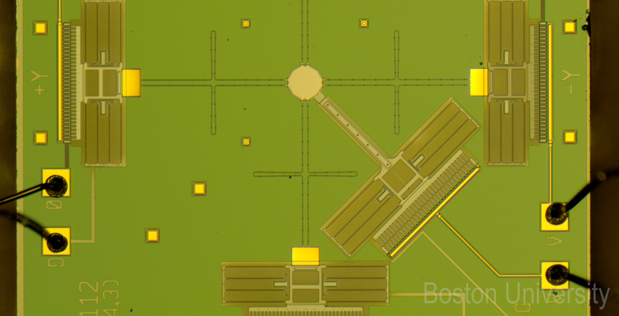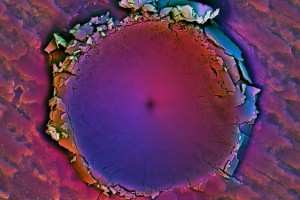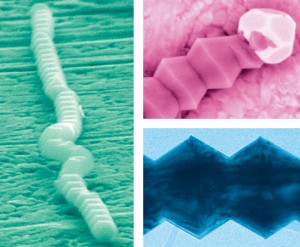Is it STEM (science, technology, engineering, and mathematics) or is it STEAM (science, technology, engineering, arts, and mathematics)?
It’s STEAM as least as far as Dr. Scott Sampson is concerned. In his July 6, 2018 Creative Mornings Vancouver talk in Vancouver (British Columbia, Canada) he mentioned a major science education/outreach initiative taking place in the province of British Columbia (BC) but intended for all of Canada, Symbiosis There was some momentary confusion as Sampson’s slide deck identified it as a STEM initiative. Sampson verbally added the ‘A’ for arts and henceforth described it as a STEAM initiative. (Part of the difficulty is that many institutions have used the term STEM and only recently come to the realization they might want to add ‘art’ leading to confusion in Canada and the US, if nowhere else, as old materials require updating. Actually, I vote for adding the humanities too so that we can have SHTEAM.)
You’ll notice, should you visit the Symbiosis website, that the STEM/STEAM confusion extends further than Sampson’s slide deck.
Sampson, “a dinosaur paleontologist, science communicator, and passionate advocate for reimagining cities as places where people and nature thrive, serves (since 2016) as president and CEO of Science World British Columbia” or as they’re known on their website: Science World at TELUS World of Science. Unwieldy, eh?
The STEM/STEAM announcement
None of us in the Creative Mornings crowd had heard of Symbiosis or Scott Sampson for that matter (apparently, he’s a huge star among the preschool set due to his work on the PBS [US Public Broadcasting Service] children’s show ‘Dinosaur Train’). Regardless, it was good to hear of this effort although my efforts to learn more about it have been a bit frustrated.
First, here’s what I found: a May 25, 2017 Science World media release (PDF) about Symbiosis,
Science World Introduces Symbiosis
A First-of Its-Kind [sic] Learning Ecosystem forCanadaWe live in a time of unprecedented change. High-tech innovations are rapidly transforming 21st century societies and the Canadian marketplace is increasingly dominated by novel, knowledge-based jobs requiring high levels of literacy in science, technology, engineering and math (STEM). Failing to prepare the next generation to be STEM literate threatens the health of our youth, the economy and the places we live. STEM literacy needs to be integrated into the broader context of what it means to be a 21st century citizen. Also important is inclusion of an extra letter, “A,” for art and design, resulting in STEAM. The idea behind Symbiosis is to make STEAM learning accessible across Canada.
Every major Canadian city hosts dozens to hundreds of organizations that engage children and youth in STEAM learning. Yet, for the most part, these organizations operate in isolation. The result is that a huge proportion of Canadian youth, particularly in First Nations and other underserved communities, are not receiving quality STEAM learning opportunities.
In order to address this pressing need, Science World British Columbia (scienceworld.ca) is spearheading the creation of Symbiosis, a deeply collaborative STEAM learning ecosystem. Driven by a diverse network of cross-sector partners, Symbiosis will become a vibrant model for scaling the kinds of learning and careers needed in a knowledge-based economy.
Today [May 25, 2017], Science World is proud to announce that Symbiosis has been selected by STEM Learning Ecosystems, a US-based organization, to formally join a growing movement. In just two years, the STEM Learning Ecosystems initiative has become a thriving network of hundreds of organizations and thousands of individuals, joined in regional partnerships with the objective of collaborating in new and creative ways to increase equity, quality, and STEM learning outcomes for all youth. Symbiosis will be the first member of this initiative outside the United States.
Symbiosis was selected to become part of the STEM Learning Ecosystem initiative because of a demonstrated [emphasis mine] commitment to cross-sector collaborations in schools and beyond the classroom. As STEM Ecosystems evolve, students will be able to connect what they’ve learned, in and out of school, with real-world, community-based opportunities.
…
I wonder how Symbiosis demonstrated their commitment. Their website doesn’t seem to have existed prior to 2018 and there’s no information there about any prior activities.
A very Canadian sigh
I checked the STEM Learning Ecosystems website for its Press Room and found a couple of illuminating press releases. Here’s how the addition of Symbiosis was described in the May 25, 2017 press release,
…
The 17 incoming ecosystem communities were selected because they demonstrate a commitment to cross-sector collaborations in schools and beyond the classroom—in afterschool and summer programs, at home, with local business and industry partners, and in science centers, libraries and other places both virtual and physical. As STEM Ecosystems evolve, students will be able to connect what is learned in and out of school with real-world opportunities.
“It makes complete sense to collaborate with like-minded regions and organizations,” said Matthew Felan of the Great Lakes Bay Regional Alliance STEM Initiative, one of the founding Ecosystems. “STEM Ecosystems provides technical assistance and infrastructure support so that we are able to tailor quality STEM learning opportunities to the specific needs of our region in Michigan while leveraging the experience of similar alliances across the nation.”
The following ecosystem communities were selected to become part of this [US} national STEM Learning Ecosystem:
- Arizona: Flagstaff STEM Learning Ecosystem
- California: Region 5 STEAM in Expanded Learning Ecosystem (San Benito, Santa Clara, Santa Cruz, Monterey Counties)
- Louisiana: Baton Rouge STEM Learning Network
- Massachusetts: Cape Cod Regional STEM Network
- Michigan: Michigan STEM Partnership / Southeast Michigan STEM Alliance
- Missouri: Louis Regional STEM Learning Ecosystem
- New Jersey: Delran STEM Ecosystem Alliance (Burlington County)
- New Jersey: Newark STEAM Coalition
- New York: WNY STEM (Western New York State)
- New York: North Country STEM Network (seven counties of Northern New York State)
- Ohio: Upper Ohio Valley STEM Cooperative
- Ohio: STEM Works East Central Ohio
- Oklahoma: Mayes County STEM Alliance
- Pennsylvania: Bucks, Chester, Delaware, Montgomery STEM Learning Ecosystem
- Washington: The Washington STEM Network
- Wisconsin: Greater Green Bay STEM Network
- Canada: Symbiosis, British Columbia, Canada
…
Yes, somehow a Canadian initiative becomes another US regional community in their national ecosystem.
Then, they made everything better a year later in a May 29, 2018 press release,
…
New STEM Learning Ecosystems in the United States are:
- California: East Bay STEM Network
- Georgia: Atlanta STEAM Learning Ecosystem
- Hawaii: Hawai’iloa ecosySTEM Cabinet
- Illinois: South Suburban STEAM Network
- Kentucky: Southeastern Kentucky STEM Ecosystem
- Massachusetts: MetroWest STEM Education Network
- New York: Greater Southern Tier STEM Learning Network
- North Carolina: STEM SENC (Southeastern North Carolina)
- North Dakota: North Dakota STEM Ecosystem
- Texas: SA/Bexar STEM/STEAM Ecosystem
The growing global Community of Practice has added: [emphasis mine]
- Kenya: Kenya National STEM Learning Ecosystem
- México: Alianza Para Promover la Educación en STEM (APP STEM)
…
Are Americans still having fantasies about ‘manifest destiny’? For those unfamiliar with the ‘doctrine’,
In the 19th century, manifest destiny was a widely held belief in the United States that its settlers were destined to expand across North America. …
They seem to have given up on Mexico but the dream of acquiring Canadian territory rears its head from time to time. Specifically, it happens when Quebec holds a referendum (the last one was in 1995) on whether or not it wishes to remain part of the Canadian confederation. After the last referendum, I’d hoped that was the end of ‘manifest destiny’ but it seems these 21st Century-oriented STEM Learning Ecosystems people have yet to give up a 19th century fantasy. (sigh)
What is Symbiosis?
For anyone interested in the definition of the word, from Wordnik,
symbiosis
- …
Definitions
from The American Heritage® Dictionary of the English Language, 4th Edition
- n. Biology A close, prolonged association between two or more different organisms of different species that may, but does not necessarily, benefit each member.
- n. A relationship of mutual benefit or dependence.
from Wiktionary, Creative Commons Attribution/Share-Alike License
- n. A relationship of mutual benefit.
- n. A close, prolonged association between two or more organisms of different species, regardless of benefit to the members.
- n. The state of people living together in community.
As for this BC-based organization, Symbiosis, which they hope will influence Canadian STEAM efforts and learning as a whole, I don’t have much. From the Symbiosis About Us webpage,
A learning ecosystem is an interconnected web of learning opportunities that encompasses formal education to community settings such as out-of-school care, summer programs, science centres and museums, and experiences at home.
In May 2017, Symbiosis was selected by STEM Learning Ecosystems, a US-based organization, to formally join a growing movement. As the first member of this initiative outside the United States, Symbiosis has demonstrated a commitment to cross-sector collaborations in schools and beyond the classroom. As Symbiosis evolves, students will be able to connect what they’ve learned, in and out of school, with real-world, community-based opportunities.
We live in a time of unprecedented change. High-tech innovations are rapidly transforming 21st century societies and the Canadian marketplace is increasingly dominated by novel, knowledge-based jobs requiring high levels of literacy in science, technology, engineering and math (STEM). Failing to prepare the next generation to be STEM literate threatens the health of our youth, the economy, and the places we live. STEM literacy needs to be integrated into the broader context of what it means to be a 21st century citizen. Also important is inclusion of an extra letter, “A,” for art and design, resulting in STEAM.
In order to address this pressing need, Science World British Columbia is spearheading the creation of Symbiosis, a deeply collaborative STEAM learning ecosystem. Driven by a diverse network of cross-sector partners, Symbiosis will become a vibrant model for scaling the kinds of learning and careers needed in a knowledge-based economy.
Symbiosis:
- Acknowledges the holistic connections among arts, science and nature
- Is inclusive and equitable
- Is learner-centered
- Fosters curiosity and life-long learning
- Is relevant—should reflect the community
- Honours diverse perspectives, including Indigenous worldviews
- Is partnerships, collaboration, and mentorship
- Is a sustainable, thriving community, with resilience and flexibility
- Is research-based, data-driven
- Shares stories of success—stories of people/role models using STEAM and critical thinking to make a difference
- Provides a variety of access points that are available to all learners
I was looking for more concrete information such as:
- what is your budget?
- which organizations are partners?
- where do you get your funding?
- what have you done so far?
I did get an answer to my last question by going to the Symbiosis news webpage where I found these,
We’re hiring!
7/3/2018 [Their deadline is July 13, 2018]
STAN conference
3/20/2018
Symbiosis on CKPG
3/12/2018
Design Studio #2 in March
2/15/2018
BC Science Outreach Workshop
2/7/2018
Make of that what you will. Also, there is a 2018 copyright notice (at the bottom of the webpages) but no copyright owner is listed.
There is some Symbiosis information
A magazine known as BC Business (!) offers some details in a May 11, 2018 opinion piece, Note: Links have been removed,
… Increasingly, the Canadian marketplace is dominated by novel, knowledge-based jobs requiring high levels of literacy in STEM (science, technology, engineering and math). Here in B.C., the tech sector now employs over 100,000 people, about 5 percent of the province’s total workforce. As the knowledge economy grows, these numbers will rise dramatically.
Yet technology-driven businesses are already struggling to fill many roles that require literacy in STEM. …
Today, STEM education in North America and elsewhere is struggling. One study found that 60 percent of students who enter high school interested in STEM fields change their minds by graduation. Lacking mentoring, students, especially girls, tend to lose interest in STEM. [emphasis mine]Today, only 22 percent of Canadian STEM jobs are held by women. Failing to prepare the next generation to be STEM-literate threatens the prospects of our youth, our economy and the places we live.
More and more, education is no longer confined to classrooms. … To kickstart this future, a “STEM learning ecosystem” movement has emerged in the United States, grounded in deeply collaborative, cross-sector networks of learning opportunities.
…
Symbiosis will concentrate on a trio of impacts:
1) Dramatically increasing the number of qualified STEM mentors in B.C.—from teachers and scientists to technologists and entrepreneurs;
2) Connecting this diversity of mentors with children and youth through networked opportunities, from classroom visits and on-site shadowing to volunteering and internships; and
3) Creating a digital hub that interweaves communities, hosts a library of resources and extends learning through virtual offerings. [emphases mine]
Science World British Columbia is spearheading Symbiosis, and organizations from many sectors have expressed strong interest in collaborating—among them K-12 education, higher education, industry, government and non-profits. Several of these organizations are founding members of the BC Science Charter, which formed in 2013.
Symbiosis will launch in fall of 2018 with two pilot communities: East Vancouver and Prince George. …
As for why students tend to lose interest in STEM, there’s a rather interesting longitudinal study taking place in the UK which attempts to answer at least some of that question. I first wrote about the ASPIRES study in a January 31, 2012 posting: Science attitude kicks in by 10 years old. This was based on preliminary data and it seemed to be confirmed by an unrelated US study of high school students also mentioned in that posting (scroll down about 40% of the way).
In short, both studies suggested that children are quite to open to science but when it comes time to think about careers, they tend to ‘aspire’ to what they see amongst family and friends. I don’t see that kind of thinking reflected in any of the information I’ve been able to find about Symbiosis and it was not present in Sampson’s, Creative Mornings talk.
However, I noted during Sampson’s talk that he mentioned his father, a professor of psychology at the University of British Columbia and how he had based his career expectations on his father’s career. (Sampson is from Vancouver originally.) Sampson, like his father, was at one point a professor of ‘science’ at a university.
Perhaps one day someone from Symbiosis will look into the ASPIRE studies or even read my blog 🙂
You can find the latest about what is now called the ASPIRES 2 study here. (I will try to post my own update to the ASPIRES projects in the near future).
Best hopes
I am happy to see Symbiosis arrive on the scene and I wish all the best for the initiative. I am less concerned than the BC Business folks about supplying employers with the kind of employees they want to hire and hopeful that Symbiosis will attract not just the students, educators, mentors, and scientists to whom they are appealing but will cast a wider net to include philosophers, car mechanics, hairdressers, poets, visual artists, farmers, chefs, and others in a ‘pursuit of wonder’.
Aside: I was introduced to the phrase ‘pursuit of wonder’ by a friend who sent me a link to José Teodoro’s May 29, 2018 interview with Canadian filmmaker, Peter Mettler for the Brick. Mettler discusses his film about the Northern Lights and the technical challenges he met along the way.



![The Endless Column, Târgu Jiu, România [downlaoded from http://terpconnect.umd.edu/~ckopetz/brancusi.htm]](http://www.frogheart.ca/wp-content/uploads/2013/12/EndlessColumn-200x300.jpg)